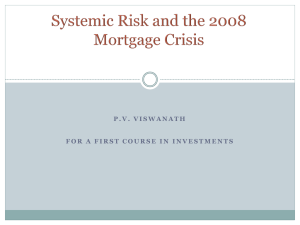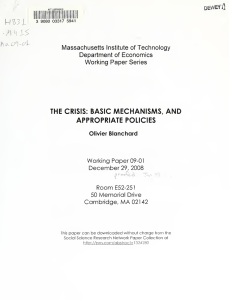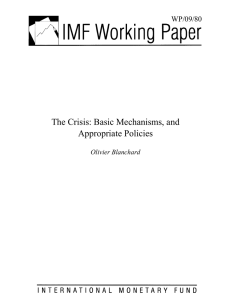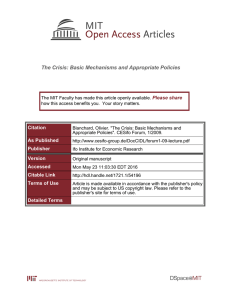File - Matthew Gleason's E
advertisement
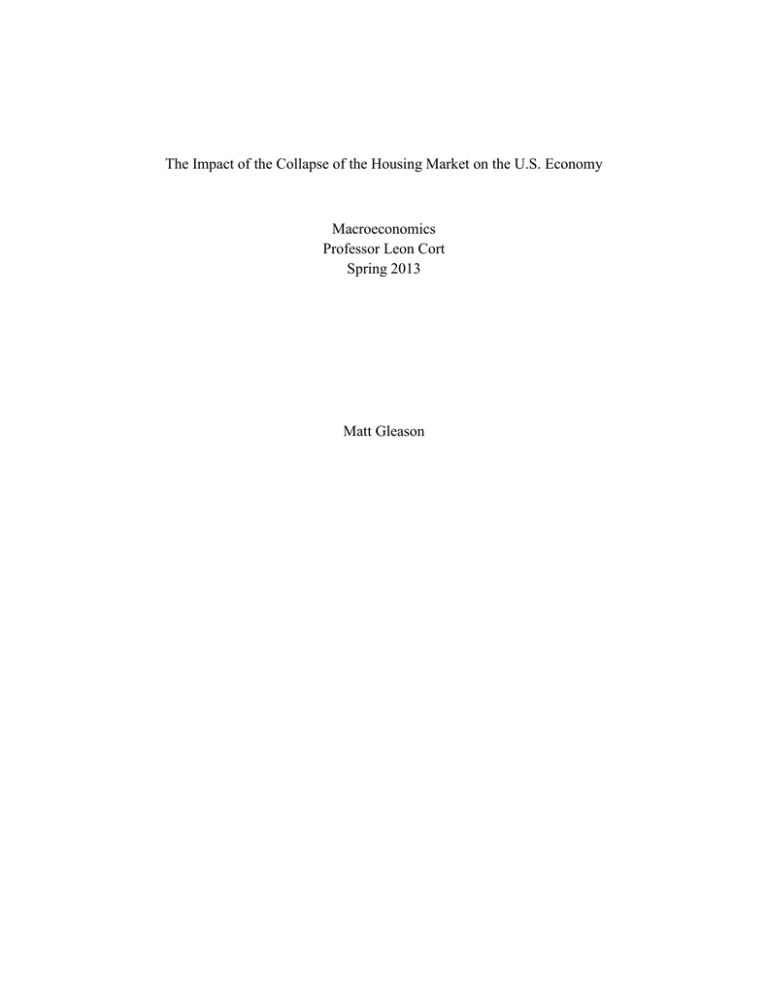
The Impact of the Collapse of the Housing Market on the U.S. Economy Macroeconomics Professor Leon Cort Spring 2013 Matt Gleason The failure of the housing market from 2007-2009 dramatically impacted the U.S. economy, but how? This is a known statement but many people don’t know exactly how the housing market was linked to the U.S. economy recession. Most people think that the housing bubble burst as a result of the poor economy but it is the complete opposite. When the bubble burst, there was a long domino effect and ultimately led to the worst recession in recent decades. To start from the beginning, the housing market was a seller’s market. House prices increased because there was a high demand for housing. This should have steered the middle class away from “reaching” and trying to buy houses that the used to be able to buy, but now shouldn’t because the price went up. But it didn’t. People kept buying houses that they thought they could afford but really couldn’t and ultimately ended up defaulting on their mortgages. As more and more people defaulted on their mortgages, the banks that lent the homeowners their money don’t get repaid. The banks obviously can’t function like this forever so they implement changes, and those changes meant not loaning out so much money. This in itself will slow the economy because loans aren’t just used for mortgages but for people who want to start up small businesses. Now in the last paragraph it says that the banks were the ones who were losing money when people defaulted on their mortgages. That isn’t exactly true. Once the bank loaned a mortgage, they sold the mortgage as an investment to an investor or to an investment firm. These investors would buy up many of the mortgages because it seemed like the safest investment at the time (usually investors buy treasury bills from the Federal Reserve, but when the dot com bust and September 11th and happened Alan Greenspan lowered the interest rate to 1%. This made investors think that investment wasn’t worth it so they went. However this meant that U.S. banks could borrow with only 1% interest (very good) as well. With all of the money the banks and investment firms borrowed, they bought up a lot of mortgages thinking it was safe.). So when the banks and investment firms started losing money, the economy started to decline. This is because when people buy things on credit, but don’t repay what they should, the money that the investors should be getting back is non-existent. So when people ask the question “where did all of the money go?” it really didn’t “go” anywhere, it was just not repaid. Now once all of this happened investors started to not invest as much and in turn the banks didn’t lend as often. This type of behavior from the financial system is what will bring the economy to a screeching halt because; less loans to homeowners/small business owners; less money in circulation. The way that the U.S. got out of this big mess was the government gave the financial system billions of dollars that they were supposed to lend out. This would kick start the economy and it should continue to rise as long as the banks kept lending (intelligently). But that’s not what the banks did. The banks bought treasury bills from the government and earned interest back. While it seems like a low move, the banks did bounce back and started lending more, just not how the government planned. Works Cited YouTube video: “The Crisis of Credit Visualized” Movie: “Too Big to Fail” from the book Too Big to Fail by Andrew Ross Sorkin



